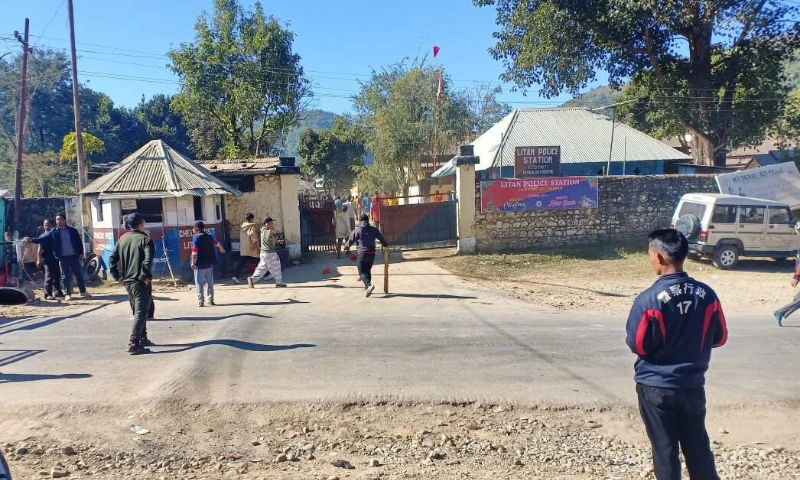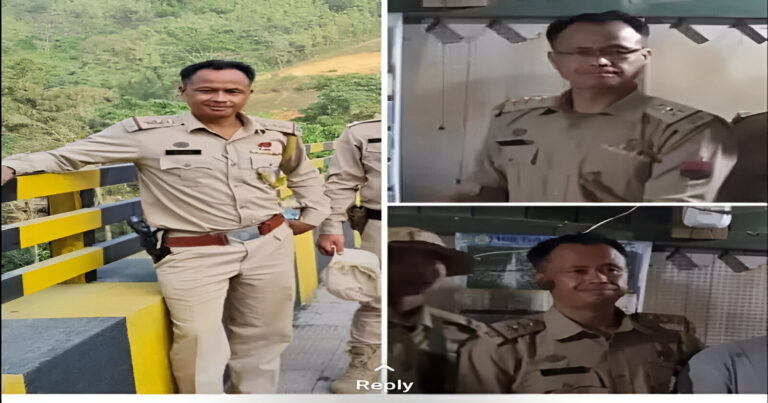Manipur: Naga groups issue ultimatum over Kuki-linked road rage in Ukhrul
Short Summary
Naga tribal bodies in Manipur have issued a fresh ultimatum following a road rage incident in Ukhrul, allegedly involving members of the Kuki community. The incident ignited simmering ethnic tensions rooted in the longstanding Kuki–Naga conflict. The Naga groups demand swift police action and accountability, threatening to escalate protests if their requests are ignored
When a Road Rage Turns Ethnic Flashpoint in Ukhrul
Introduction: More Than Just a Traffic Scuffle
Imagine a moment of anger on a narrow, winding hill road—what starts as a simple road rage quickly becomes a symbol of deeper wounds. That’s what happened recently in Ukhrul district, Manipur. A minor collision, allegedly involving individuals from the Kuki community, triggered a broader uproar, prompting Naga groups to deliver a stern warning to authorities. But this isn’t just about a fender-bender—it taps into decades of ethnic friction, land disputes, and hurt history.
In this article, we trace each twist of the story, offer context on Naga–Kuki relations, and unpack what the latest ultimatum means for Manipur’s fragile peace.
Section 1: What Actually Happened?
Eyewitnesses report that a vehicle—believed to belong to a Kuki individual—collided with a Naga-owned vehicle on a hill road in Ukhrul. The encounter escalated quickly: shouts were exchanged, accusations flew, and the incident took on ethnic overtones. Before long, local Naga bodies picked up the phone, demanding swift justice .
Key demands from Naga organisations include:
- Immediate arrest of the parties involved
- A clear, transparent police investigation
- Preventing any communal flare-ups
They delivered a 24-hour ultimatum: act now, or face coordinated protests in Ukhrul and valley areas
Section 2: Why an Angry Road Rage Can Tip Manipur Over
A Historical Fault Line
The Kuki–Naga conflict goes back to the 1990s, when both tribes clashed over land, identity, and insurgent power—locked in battle over settlements and influence
Sensitive Ecology of Ethnic Relations
In hill areas like Ukhrul, a single flashpoint can ignite broader communal anger. Minor disputes can reopen old scars—ancestral land, taxation, settlement patterns—all simmering just beneath the surface
Why This Moment is Especially Perilous
The 2023–2025 violence across Manipur, largely between Meitei and Kuki-Zo communities, further frayed tribal relations. Even if the current incident is small, it immediately echoes with memories of recent conflicts, making peace fragile
Section 3: The Naga Groups’ Ultimatum — What They Demanded
Here’s a breakdown of their demands:
- Arrests within 24 hours of the incident
- Transparent investigation by state police
- Zero tolerance for ethnically charged rhetoric or mobilization
- Preventive measures to avoid escalation (barriers, check-points, dialogue)
The tone? Firm—but also desperate. There’s a growing impatience with state mechanisms, seen as slow or biased
Section 4: Police Under Pressure — How They’re Reacting
While updates are limited, the police spokesperson has assured that:
- Investigation is underway
- CCTV footage and eyewitness accounts are being recorded
- Additional patrols are being deployed to prevent mob mobilization
But distrust remains. Naga bodies insist that a delayed or half-hearted response could be interpreted as appeasement—and may force them to mobilize protests.
Section 5: Echoes of the Past — Naga–Kuki Relations
Land Rights and Settlement
Nagaland tribal councils once challenged Kuki expansion into Naga areas, accusing them of encroachment. For the Kukis, it’s ancestral homeland—and both sides trace these tensions to agreements involving tribute or temporary settlement dating back to the 1970s and earlier
Violent Episodes
Conflict flared violently—in 1992, then in the early 2000s, involving militias like KNA and NSCN. Communities endured killings, arson, and displacement
Section 6: Why This Incident Isn’t Isolated
Even minor incidents now carry major weight. Here’s why:
- Fresh wounds from the broader 2023–25 violence
- Surveillance of group behavior: every incident is interpreted as ethnic aggression
- Social media amplification: WhatsApp forwards and Facebook echo chambers spin it up fast
- Tribal organisations on alert: both sides ready to mobilize
A simple accident can snowball in minutes—and escalate beyond control.
Section 7: What’s at Stake? — The Real Risks if It Escalates
- Communal unrest in Ukhrul—roadblocks, shutdowns, protests
- Tourism hit: Shirui Lily Festival just happened in May—Ukhrul can’t afford cancellations
- Broader statewide tension—could pull valley communities into hill disputes
- Policing trust breakdown—if the community feels police are biased, local law and trust erode
Section 8: Pathways Back to Normalcy — What Needs to Happen
- Swift, impartial probe that everyone respects
- Joint community dialogue, moderated by neutral agencies
- Preventive peace measures—mixed patrols, youth sensitization, joint cultural events
- Media responsibility—accurate reporting, no sensationalism
- Political mediation by state or central agencies
Section 9: Lessons for Manipur’s Wider Peace Process
- Quick intervention matters—ignoring small incidents can trigger larger fires
- Local civil society must be involved—they’re better equipped for context-aware mediation
- Infrastructure alone won’t solve ethnic rifts—trust-building is critical
Section 10: Could This Be a Turning Point?
If handled well, it could be a model of peaceful resolution:
- Nagas get swift action and a voice
- Kukis don’t feel scapegoated
- Multi-level trust strengthens
But if mishandled, it could reinforce beliefs that the state is biased—feeding cycles of mistrust. That’s the fragile rub.
Conclusion: A Small Incident, Big Lessons
A road rage in Ukhrul isn’t just stray anger—it’s a symptom of deep-rooted fractures. Yet, it can also be a moment of opportunity. If community voices, authorities, and local groups work fast and fair together, they can turn a flashpoint into a springboard for real peace.
Five Unique FAQs
1. Why did Naga bodies issue a 24-hour ultimatum?
They see immediate police action as essential to prevent any perception that violence is tolerated—delays could escalate tensions
2. What makes this incident more serious than typical road rage?
It’s not just a scuffle—it brings ethnic identity into play, in a context where Nagas and Kukis have long-standing historical grievances .
3. How are police responding so far?
Authorities say they’ve begun investigations, collected CCTV and statements, and increased patrols—but community trust remains tentative.
4. Could this trigger a larger ethnic conflict?
While there’s potential—like in past decades—swift dialogue and trust-building can contain it. Or if mishandled, it could spiral .
5. What can communities and individuals do right now?
Avoid speculative sharing, support neutral investigations, and engage respectfully with community peace forums to ease tensions.





